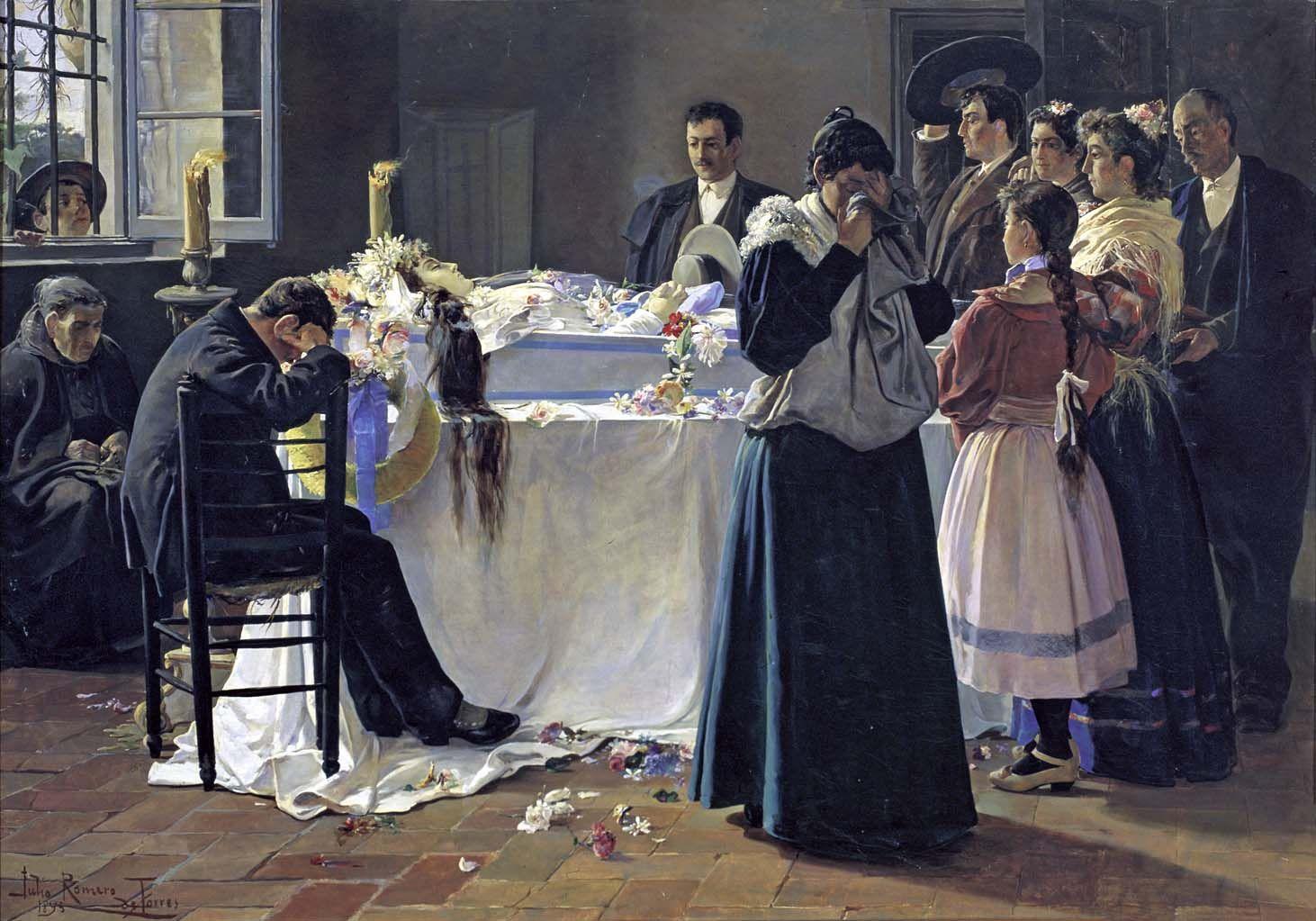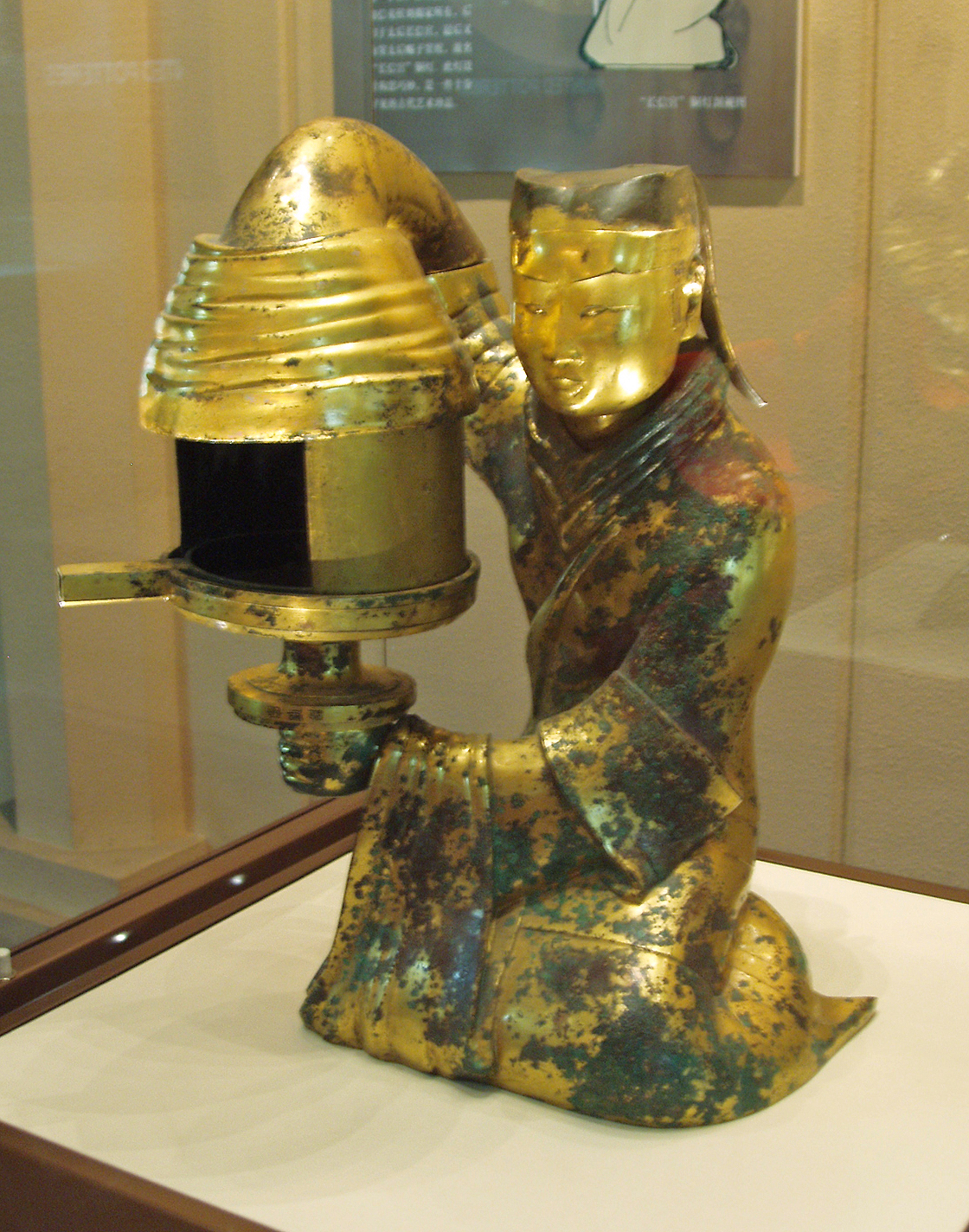|
Guo Shengtong
Guo Shengtong (郭聖通; 6–52 CE) was an empress during the Eastern Han dynasty. She was the first empress of Emperor Guangwu (Liu Xiu), the founder of Eastern Han. She lost her husband's favor and was deposed in 41. However, both she and her family continued to be respected and honored even after she was deposed. Family background and marriage to Liu Xiu Guo Shengtong came from a wealthy family. Her father Guo Chang (郭昌) was a major landowner in the Zhending Commandery (真定, roughly modern Shijiazhuang, Hebei). Her mother was a daughter of Liu Pu (劉普), Prince Gong of Zhending—a hereditary prince descended from the Western Han imperial house, as a sixth generation descendant of Emperor Jing, and she carried the courtesy title of Lady. After Guo's maternal grandfather's death in 7 BCE, her uncle Liu Yang (劉楊) inherited the principality. When Wang Mang usurped the Han throne, he was demoted to duke, and the following year demoted to a commoner. Circa ... [...More Info...] [...Related Items...] OR: [Wikipedia] [Google] [Baidu] |
Guo (surname)
"Guo", written in Chinese language, Chinese: wikt:郭, 郭, is one of the most common Chinese surnames and means "the wall that surrounds a city" in Chinese. It can also be transliterated into English as Cok, Gou, Quo, Quach, Quek, Que, Keh, Kuo, Kwo, Kuoch, Kok, Koc, Kwee, Kwek, Kwik, Kwok, Kuok, Kuek, Gock, Koay, or Ker. The Korean equivalent is spelled Kwak (Korean surname), Kwak; the Vietnamese equivalent is Quach. The different ways of spelling this surname indicate the origin of the family. For example, the Cantonese "Kwok" originated in Hong Kong and the surrounding area. It is the 18th most common family name in China and can be traced as far back as the Xia Dynasty. There are eight legendary origins of the Guo surname, which include a Persian (Hui people, Hui) origin, a Korean origin, and a Mongolian origin, as a result of sinicization. However, the majority of people bearing the surname Guo are descended from the Han Chinese. In 2019, Guo was the 16th common surnam ... [...More Info...] [...Related Items...] OR: [Wikipedia] [Google] [Baidu] |
Emperor Cheng Of Han
Emperor Cheng of Han (51 BC – 17 April 7 BC) was an emperor of the Chinese Han dynasty ruling from 33 until 7 BC. He succeeded his father Emperor Yuan of Han. Under Emperor Cheng, the Han dynasty continued its growing disintegration as the emperor's maternal relatives from the Wang clan increased their grip on the levers of power and on governmental affairs as encouraged by the previous emperor. Corruption and greedy officials continued to plague the government and, as a result, rebellions broke out throughout the country. Emperor Cheng died childless after a reign of 26 years (both of his sons by concubines died in infancy; one of them starved to death and another was suffocated in prison, both the babies and the mothers were killed by the order of favorite Consort Zhao Hede, with the implied consent of the Emperor Cheng). He was succeeded by his nephew Emperor Ai of Han. Birth and career as Crown Prince Emperor Cheng was born circa 51 BC to then-Crown Prince Liu Shi (later ... [...More Info...] [...Related Items...] OR: [Wikipedia] [Google] [Baidu] |
Zizhi Tongjian
''Zizhi Tongjian'' () is a pioneering reference work in Chinese historiography, published in 1084 AD during the Northern Song dynasty in the form of a chronicle recording Chinese history from 403 BC to 959 AD, covering 16 dynasties and spanning almost 1400 years. The main text is arranged into 294 scrolls (''juan'' , equivalent to a chapter) totaling about 3 million Chinese characters. In 1065 AD, Emperor Yingzong of Song commissioned his official Sima Guang (1019–1086 AD) to lead a project to compile a universal history of China, and granted him funding and the authority to appoint his own staff. His team took 19 years to complete the work and in 1084 AD it was presented to Emperor Yingzong's successor Emperor Shenzong of Song. It was well-received and has proved to be immensely influential among both scholars and the general public. Endymion Wilkinson regards it as reference quality: "It had an enormous influence on later Chinese historical wri ... [...More Info...] [...Related Items...] OR: [Wikipedia] [Google] [Baidu] |
Book Of Later Han
The ''Book of the Later Han'', also known as the ''History of the Later Han'' and by its Chinese name ''Hou Hanshu'' (), is one of the Twenty-Four Histories and covers the history of the Han dynasty from 6 to 189 CE, a period known as the Later or Eastern Han. The book was compiled by Fan Ye and others in the 5th century during the Liu Song dynasty, using a number of earlier histories and documents as sources. Background In 23 CE, Han dynasty official Wang Mang was overthrown by a peasants' revolt known as the Red Eyebrows. His fall separates the Early (or Western) Han Dynasty from the Later (or Eastern) Han Dynasty. As an orthodox history, the book is unusual in being completed over two hundred years after the fall of the dynasty. Fan Ye's primary source was the ''Dongguan Han Ji'' (東觀漢記; "Han Records of the Eastern Lodge"), which was written during the Han dynasty itself. Contents References Citations Sources ; General * Chavannes, Édouard (1906).T ... [...More Info...] [...Related Items...] OR: [Wikipedia] [Google] [Baidu] |
Wake (ceremony)
A wake is a social gathering associated with death, held before or after a funeral. Traditionally, a wake involves family and friends keeping watch over the body of the dead person, usually in the home of the deceased. Some wakes are held at a funeral home or another convenient location. The wake or the viewing of the body is a part of death rituals in many cultures. It allows one last interaction with the dead, providing a time for the living to express their thoughts and feelings with the deceased. It highlights the idea that the loss is borne by the whole community and is a way of honoring the deceased member. The emotional tone of a wake is sometimes seen as more positive than a funeral due to the socially supportive atmosphere and the focus on the life rather than the death of the deceased. __NOTOC__ Origin The term originally referred to a late-night prayer vigil but is now mostly used for the social interactions accompanying a funeral. While the modern usage of th ... [...More Info...] [...Related Items...] OR: [Wikipedia] [Google] [Baidu] |
Luoyang
Luoyang is a city located in the confluence area of Luo River (Henan), Luo River and Yellow River in the west of Henan province. Governed as a prefecture-level city, it borders the provincial capital of Zhengzhou to the east, Pingdingshan to the southeast, Nanyang, Henan, Nanyang to the south, Sanmenxia to the west, Jiyuan to the north, and Jiaozuo to the northeast. As of December 31, 2018, Luoyang had a population of 6,888,500 inhabitants with 2,751,400 people living in the built-up (or metro) area made of the city's five out of six urban districts (except the Jili District not continuously urbanized) and Yanshi District, now being conurbated. Situated on the Central Plain (China), central plain of China, Luoyang is among the List of oldest continuously inhabited cities#East Asia, oldest cities in China and one of the History of China#Ancient China, cradles of Chinese civilization. It is the earliest of the Historical capitals of China, Four Great Ancient Capitals of China. Name ... [...More Info...] [...Related Items...] OR: [Wikipedia] [Google] [Baidu] |
Marches
In medieval Europe, a march or mark was, in broad terms, any kind of borderland, as opposed to a national "heartland". More specifically, a march was a border between realms or a neutral buffer zone under joint control of two states in which different laws might apply. In both of these senses, marches served a political purpose, such as providing warning of military incursions or regulating cross-border trade. Marches gave rise to titles such as marquess (masculine) or marchioness (feminine) in England, ''marqués'' (masculine) and ''marquesa'' (feminine) in Spanish-speaker countries, as well as in the Catalan and Galician regions, ''marquês'' (masculine) and ''marquesa'' (feminine) in Portuguese language, Portuguese-speaker countries, ''markesa'' (both masculine and feminine) in Basque Country (autonomous community), Euskadi, ''marquis'' (masculine) or ''marquise'' (feminine) in France in the Middle Ages, France and Scotland in the Middle Ages, Scotland, margrave (german: Mar ... [...More Info...] [...Related Items...] OR: [Wikipedia] [Google] [Baidu] |
Zhongshan Kingdom (Han Dynasty)
Zhongshan Kingdom or Zhongshan Principality ( zh, 中山國) was a kingdom of the Han dynasty, located in present-day southern Hebei province. The kingdom was carved out of Changshan Commandery in 154 BC and granted to Liu Sheng, son of the reigning Emperor Jing. In 55 BC, the last Prince of Zhongshan in Liu Sheng's lineage died without issue, and the kingdom was abolished. In 46 BC, however, the territory was granted to Liu Jing, son of Emperor Xuan, as his fief. Jing also left no issue, and the kingdom was subsequently granted to Liu Xing (劉興), son of Emperor Yuan. In 1 BC, Liu Kan, the heir to the Zhongshan Kingdom, was enthroned as Emperor Ping, and Liu Chengdu (劉成都), another member of the imperial family, became the new Prince of Zhongshan. He was deposed after Wang Mang's usurpation. After the restoration of Eastern Han, the kingdom was reestablished. It was initially awarded to Liu Mao (劉茂), one of Emperor Guangwu's fellow rebels against Wang Mang. Late ... [...More Info...] [...Related Items...] OR: [Wikipedia] [Google] [Baidu] |
Crown Prince
A crown prince or hereditary prince is the heir apparent to the throne in a royal or imperial monarchy. The female form of the title is crown princess, which may refer either to an heiress apparent or, especially in earlier times, to the wife of the person styled crown prince. ''Crown prince'' as a descriptive term has been used throughout history for the prince who is first-in-line to a throne and is expected to succeed (i.e. the heir apparent), barring any unforeseen future event preventing this. In certain monarchies, a more specific substantive title A substantive title is a title of nobility or royalty acquired either by individual grant or inheritance. It is to be distinguished from a title shared among cadets, borne as a courtesy title by a peer's relatives, or acquired through marriage. ... may be accorded and become associated with the position of '' heir apparent'' (e.g. Prince of Wales in the United Kingdom or Prince of Asturias in the Spain, Kingdom of Spain) ... [...More Info...] [...Related Items...] OR: [Wikipedia] [Google] [Baidu] |






